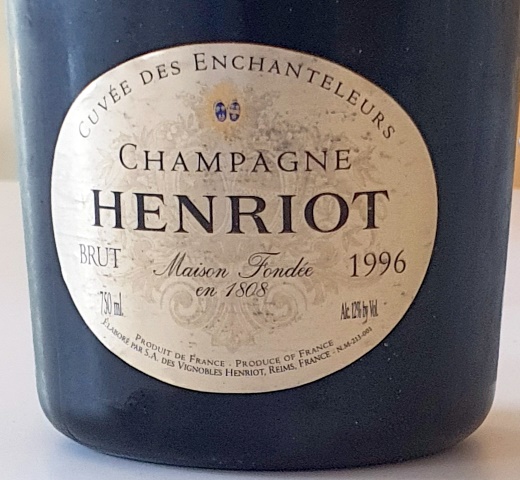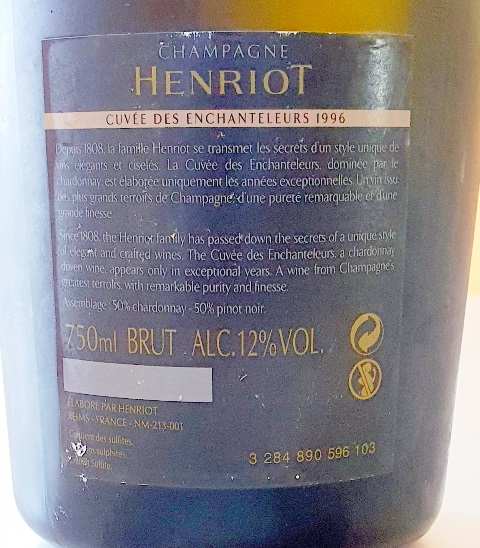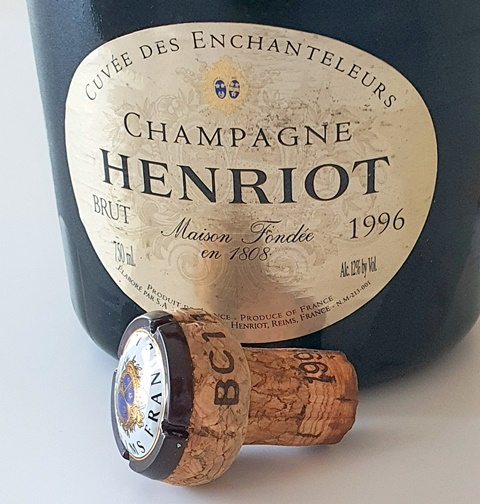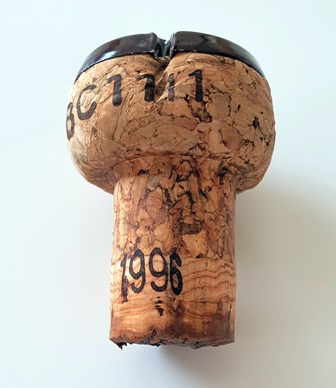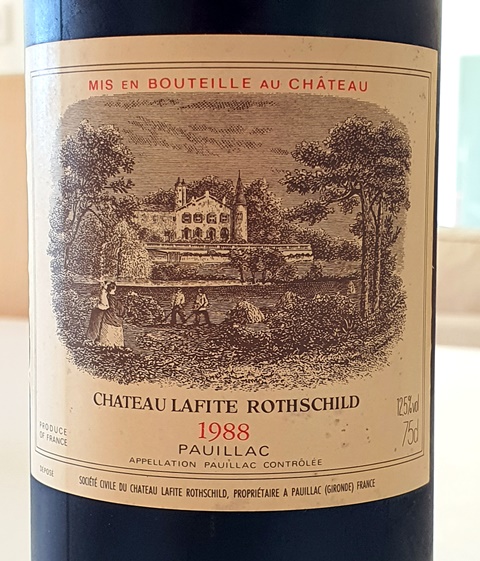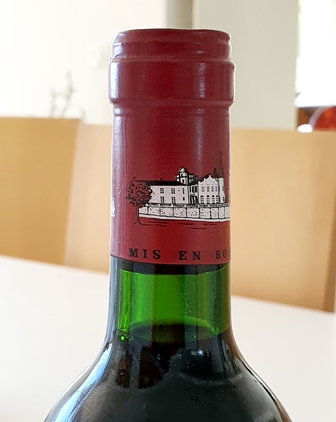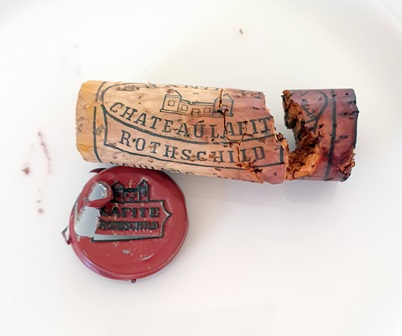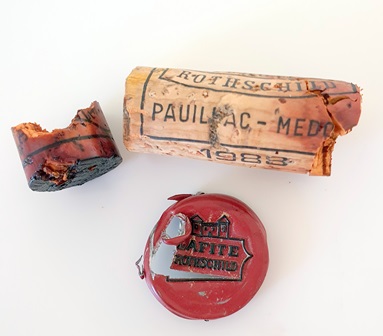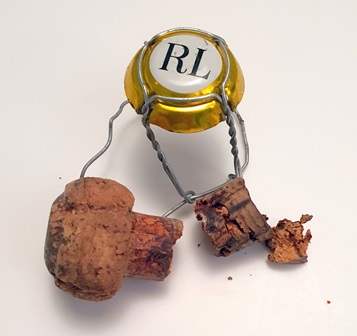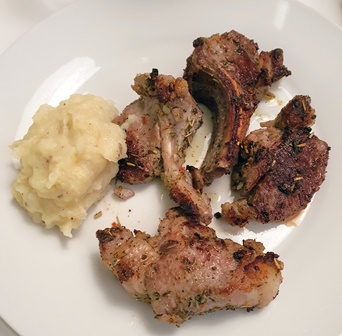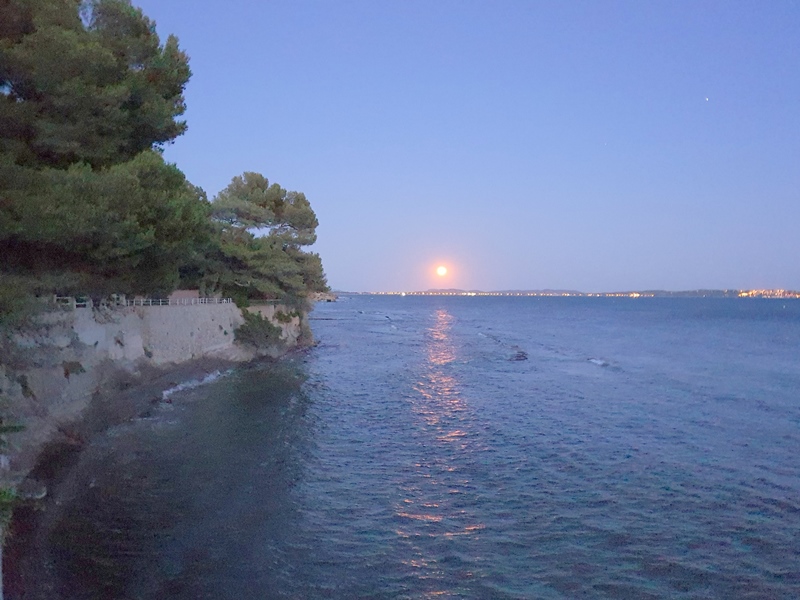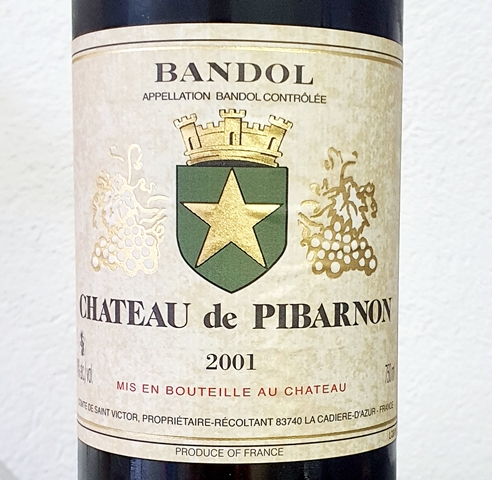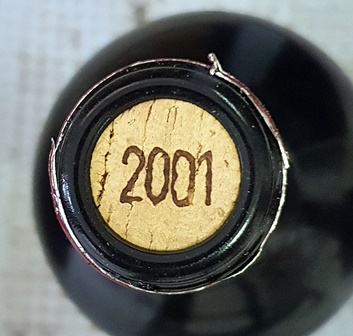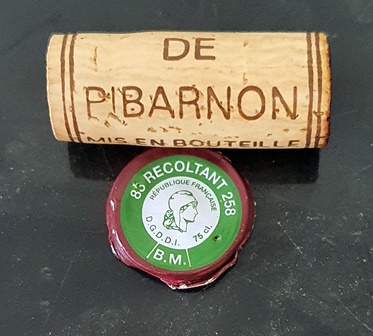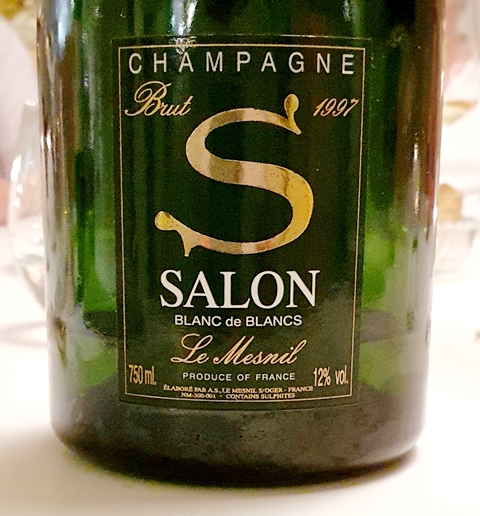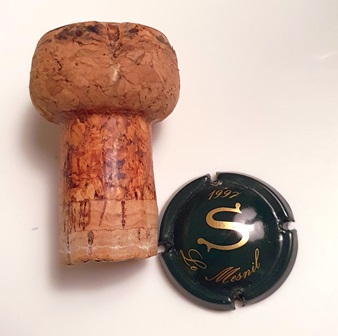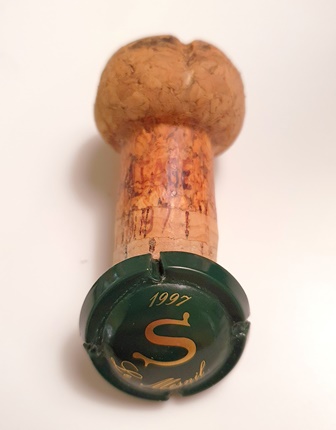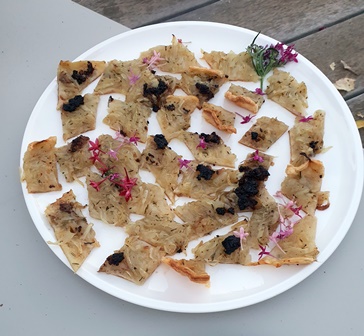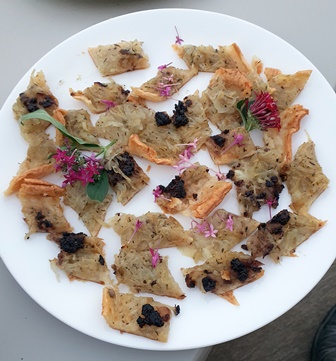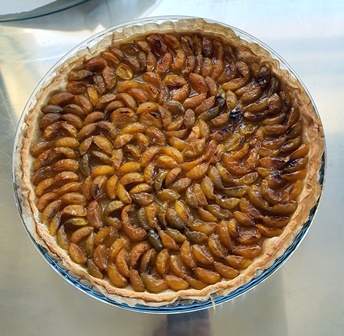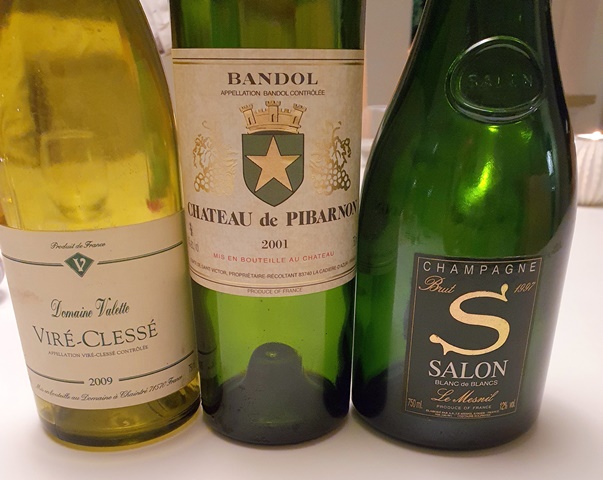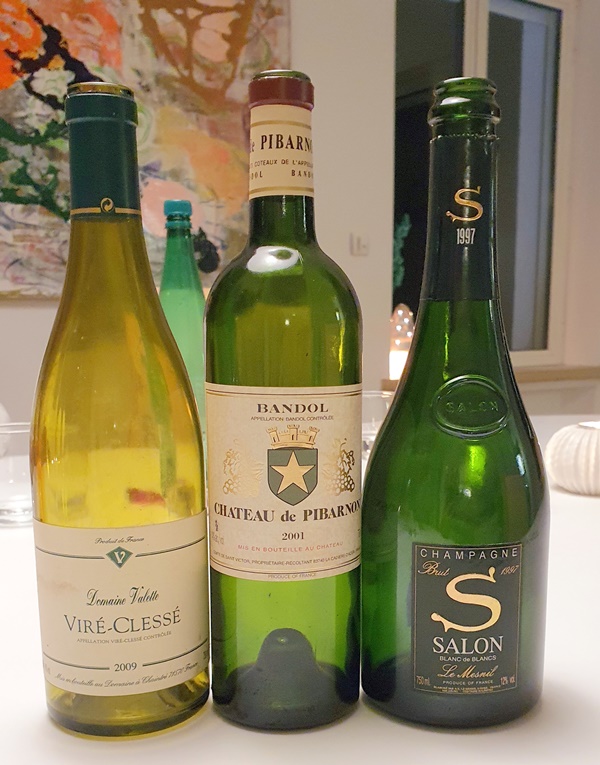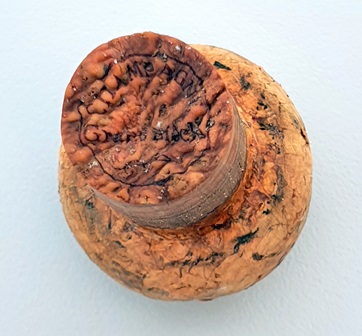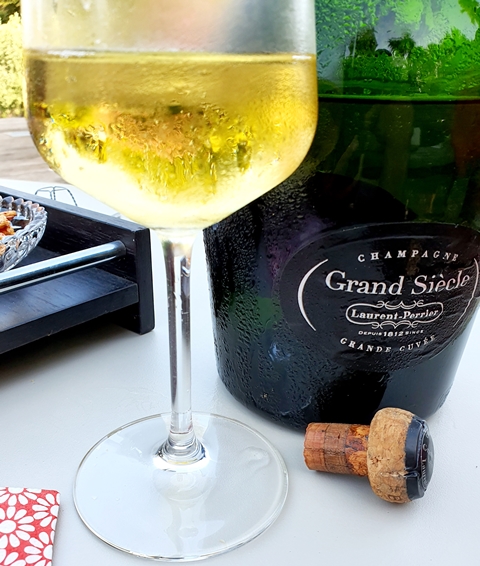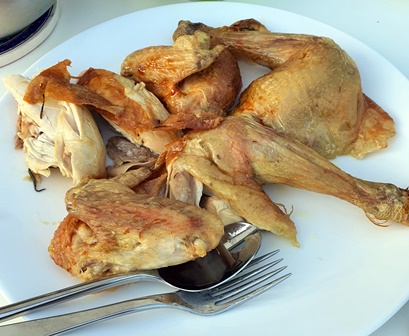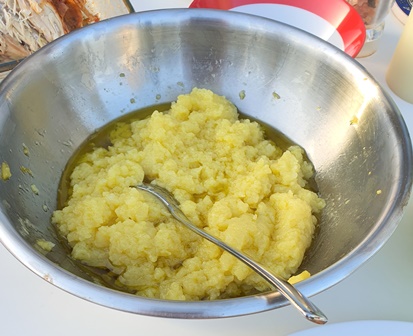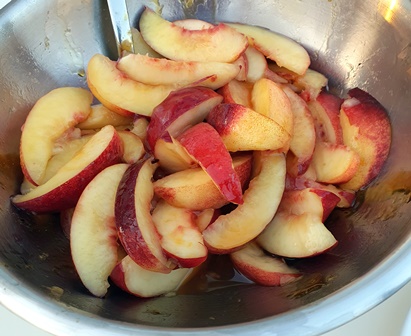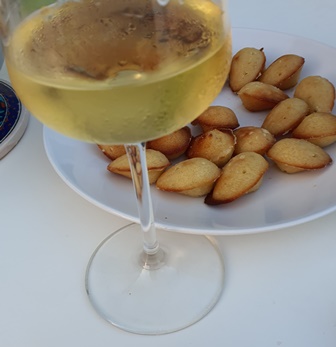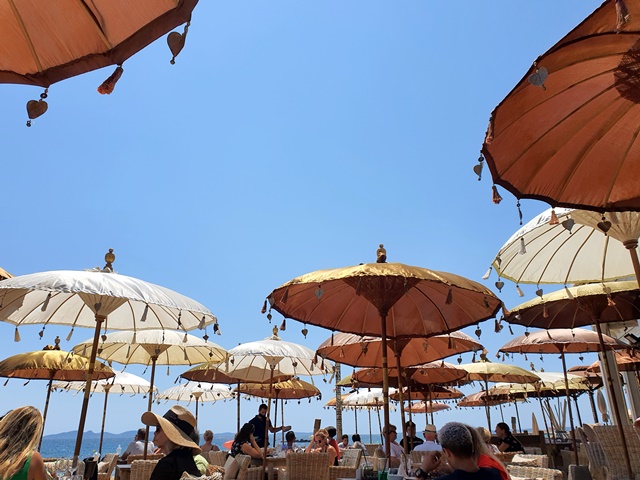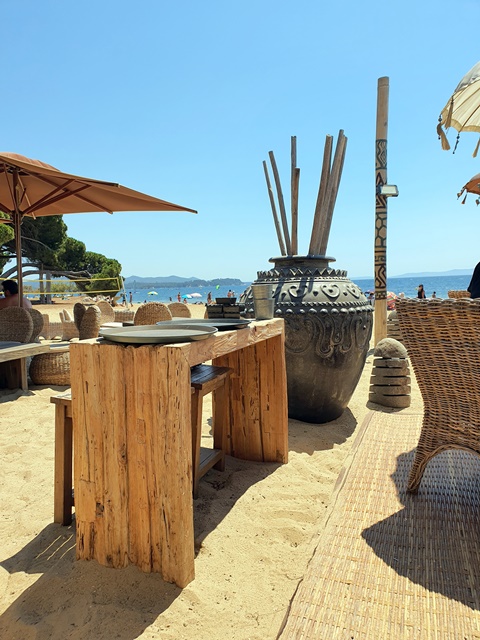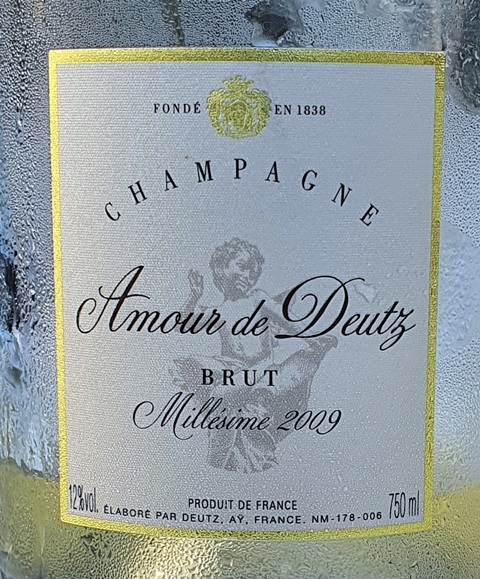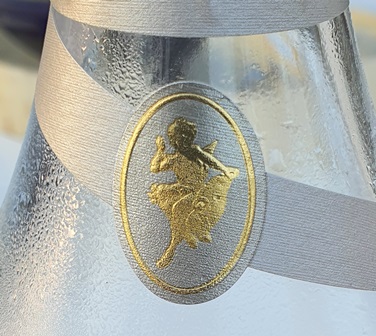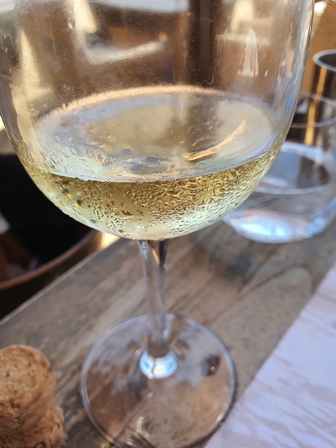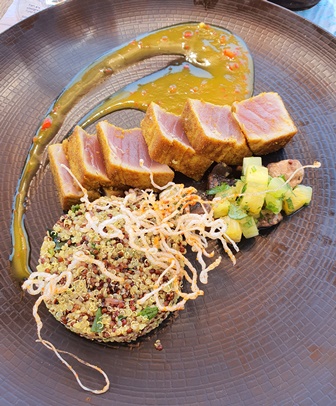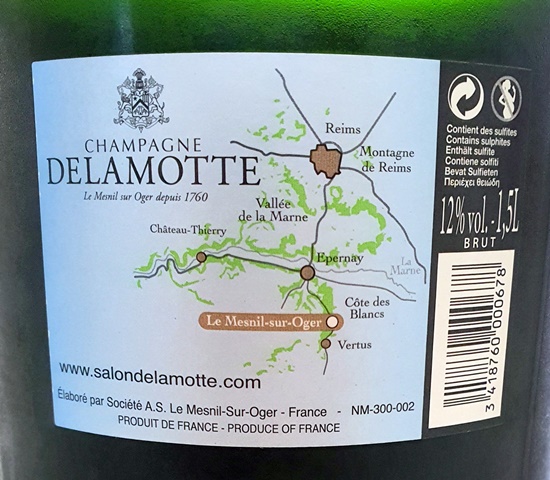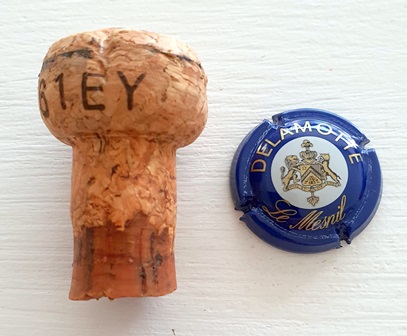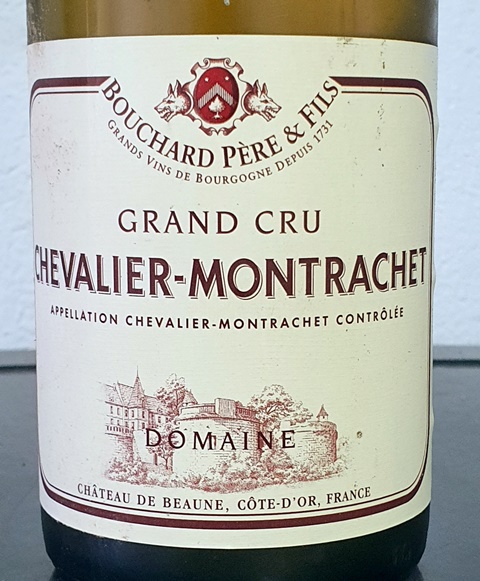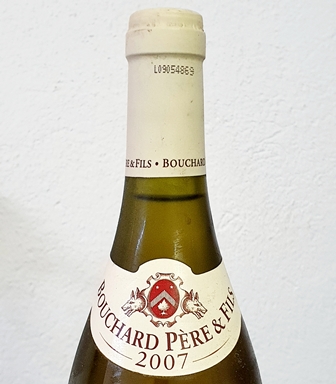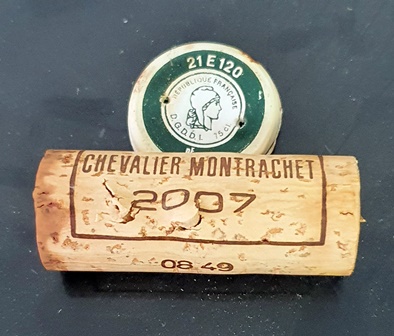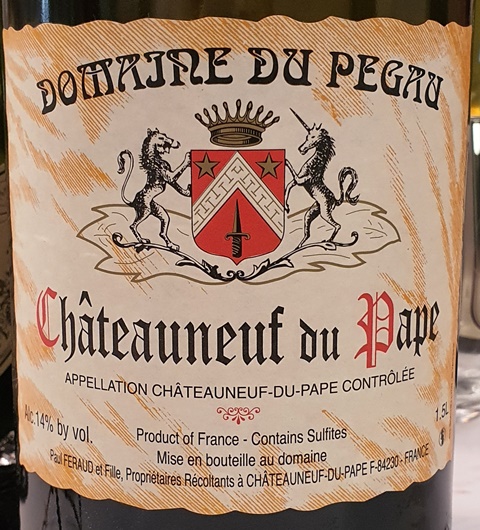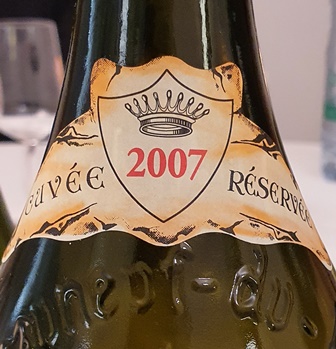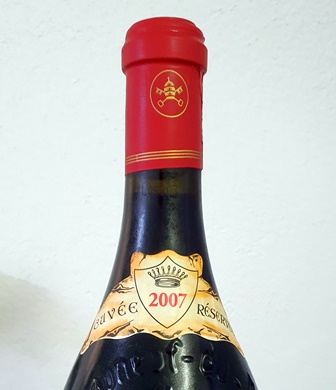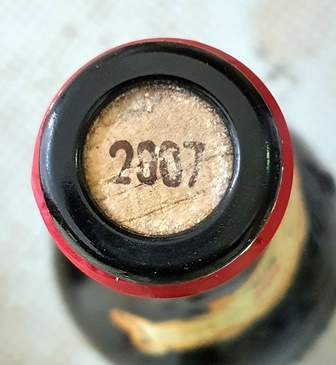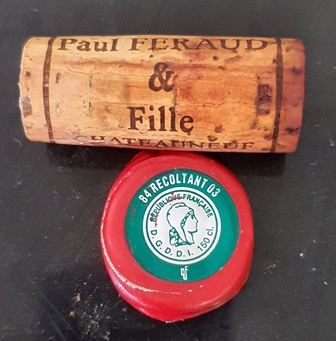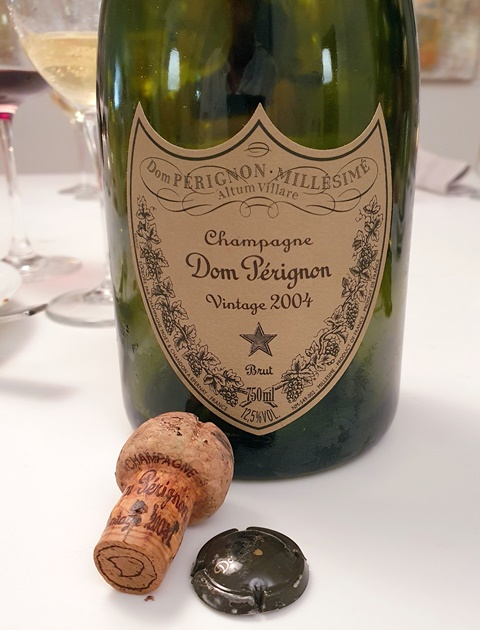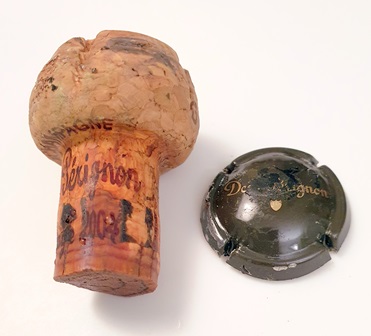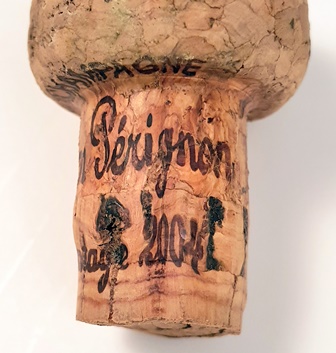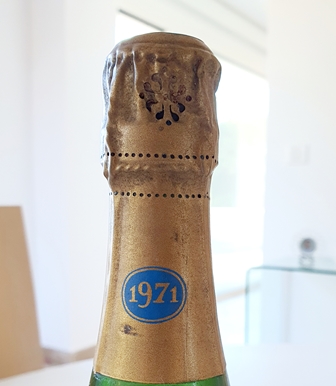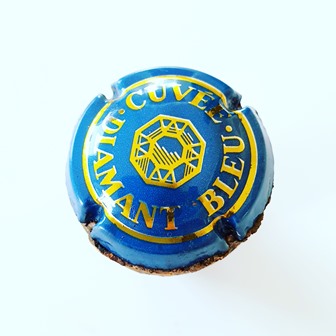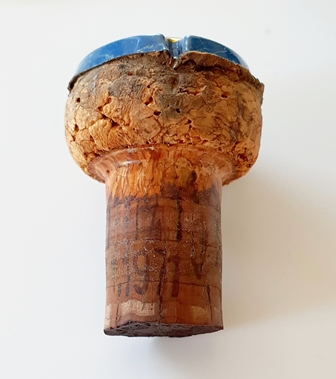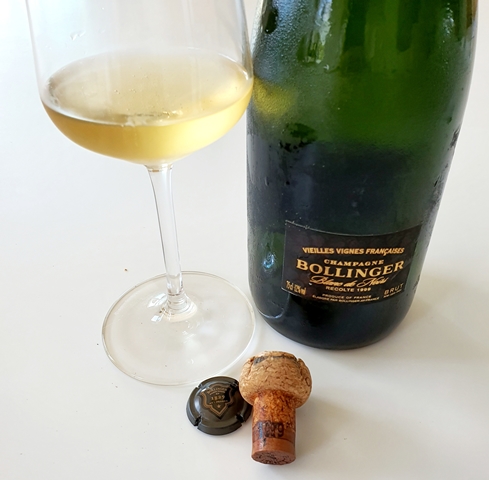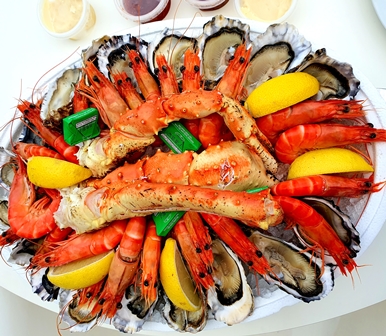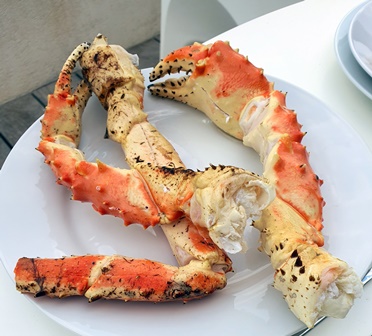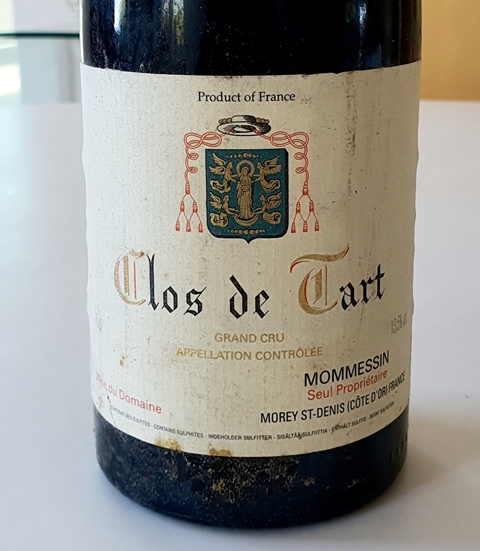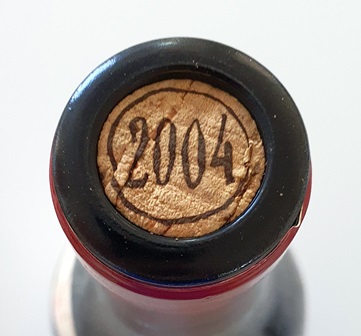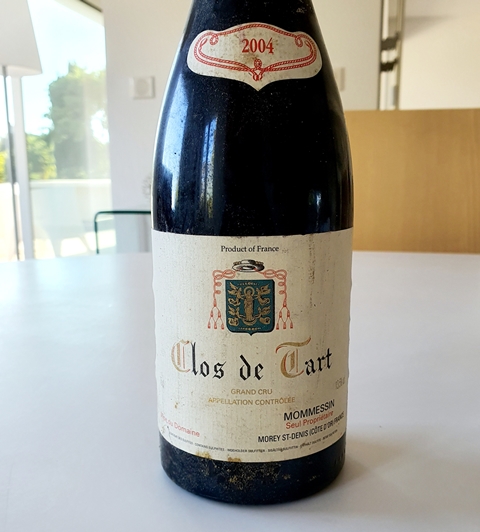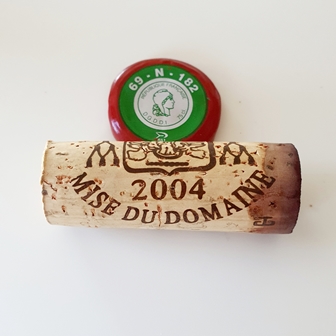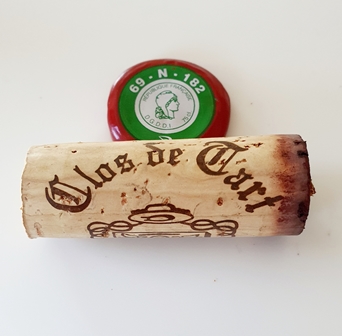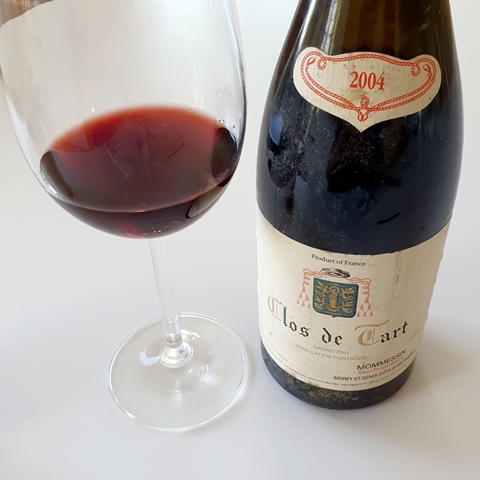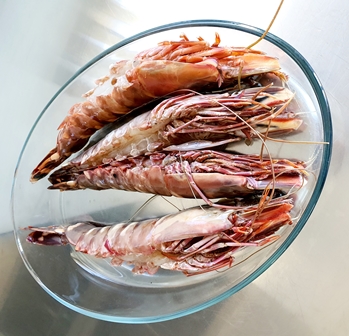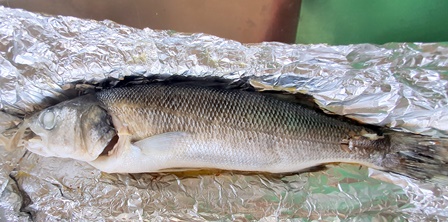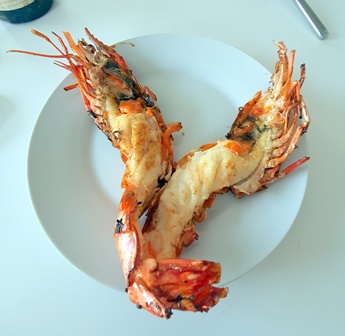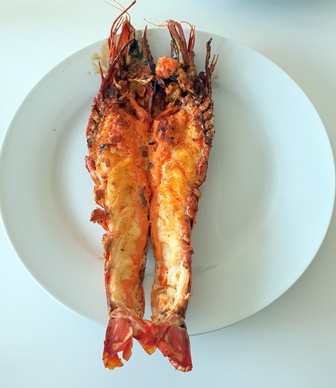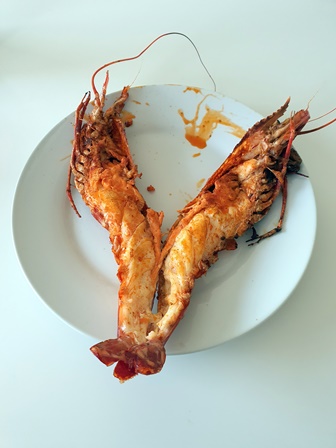C’est la première fois que nous recevons à la maison depuis quatre mois, du fait du confinement. Nous invitons une amie qui a perdu récemment son mari et qui m’avait offert il y a quelques mois une bouteille de vin de la cave de son mari, afin que nous la buvions à sa mémoire.
L’apéritif consiste en des tranches fines de poutargue présentée enveloppée dans de la cire d’abeille au lieu de la cire blanche habituelle. Cette poutargue ou boutargue est particulièrement bonne. Il y a aussi de fines tranches de Cecina de Léone, et un gouda au pesto. Le Champagne Henriot Cuvée des Enchanteleurs 1996 a un bouchon qui sort sans effort, en faisant un pschitt bien marqué. La couleur est d’un ambre clair et la bulle est active. Le premier mot qui me vient à l’esprit avec ce champagne, c’est « confortable ». Cet Henriot est extrêmement consensuel au sommet de la qualité. Il y a des champagnes plus vifs ou plus typés, mais celui-ci apporte de la joie de vivre et de la sérénité. Il est grand, aimable et confortable. Il est aussi gastronomique, à l’aise sur chaque saveur de l’apéritif. Si je devais imager ce champagne, ce serait Gary Cooper, acteur élégant et consensuel.
L’entrée est de foie gras. Le Champagne Mumm Cuvée René Lalou 1975 ne fait aucun pschitt à l’ouverture. La bulle est fine mais rare, la couleur est un peu plus ambrée que celle de l’Henriot. Le champagne est noble et plaisant, un peu plus complexe que l’enchanteleur, mais il n’est pas avantagé d’être servi après le 1996. Il aurait fallu inverser l’ordre de service, car le Mumm montre des signes de vieillesse. Il a en lui de beaux fruits orangés, une belle vivacité, mais le champagne Henriot lui fait un peu d’ombre.
C’est avant 16 heures que j’avais ouvert le cadeau de notre amie. Le Château Lafite-Rothschild 1988 a un niveau dans le goulot, à moins de deux centimètres sous le bouchon. Estimant que son âge est faible j’imagine pouvoir tirer le bouchon avec un classique limonadier. Je tire doucement, avec beaucoup de précautions mais à un moment, je sens que le bas du bouchon se déchire et je n’extirpe que les quatre cinquièmes du bouchon, la lunule du bas restant en place. Je me prépare à utiliser une longue mèche pour faire sortir la lunule, et j’entends comme une explosion. Des gouttes de vin sortent d’un coup et arrosent la table dans un périmètre de cinquante centimètres, pour une seule raison : en tirant doucement, j’ai créé une dépression de l’air sous le bouchon. La lunule était remontée, puis aspirée par la dépression, lâchant des gouttes de vin par le goulot. Ce phénomène surprenant m’était déjà arrivé mais j’avais oublié que c’était possible. Si j’avais utilisé la longue mèche dès le début, cet incident ne serait pas survenu.
J’essaie sans y croire de piquer une mèche dans la lunule, mais elle tombe dans le liquide. Il faut donc carafer le vin puisqu’il ne sera bu que dans six heures. En versant le vin en carafe je vois qu’il y a un peu de lie. J’arrive à faire sortir la lunule, je nettoie la bouteille et je verse le vin carafé dans la bouteille, constatant que le niveau n’a pratiquement pas baissé, les fines gouttes explosées ne représentant qu’un volume très faible.
Sur des côtelettes d’agneau aux herbes de Provence, je verse le Château Lafite-Rothschild 1988. La couleur est très jeune, presque noire. Le nez est puissant de charbon ou de mine de crayon. On sent la densité que ce vin promet. En bouche, le vin est noble, racé, puissant et conquérant. C’est manifestement un grand vin, mais peut-être – et je suis sans doute exagérément critique – un peu trop « propre sur lui ». C’est-à-dire qu’il est le premier de la classe, ayant réponse à tout, mais que les jeunes filles vont ignorer dans les surprises-parties, parce qu’il n’est pas assez canaille.
Riche, truffé et dense, c’est un vin parfait, un peu trop lisse pour que j’en tombe définitivement amoureux.
Un délicieux moelleux au chocolat à la densité calorique d’un trou noir a parachevé ce premier dîner d’amitié après quatre mois de confinement. Quel bonheur !
